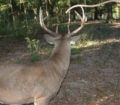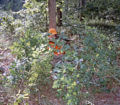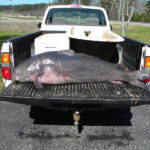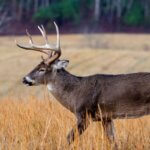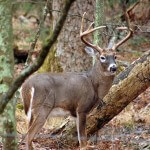Editor’s Note: Successful deer hunting involves problem solving and decision making. But to consistently succeed, you must know when to change strategies and why to abandon a hunt plan and have the flexibility to institute those changes. That’s what the deer-hunting pros do. Weather, hunting pressure, the availability of food, the rut and your intuition all determine how, when and where you should hunt.
 One time I knew on a day that I would take a buck at a certain place. The night before, I had predicted to the other hunters at the lodge that I’d have a buck by 12:00 noon. As the forest floor lightened-up with the first rays of sunlight, I saw deer at a distance but only the shapes of their bodies. But then with my Nikon https://www.nikonsportoptics.com/en/nikon-products/binoculars/index.page binoculars, I spotted ivory-crowned heads. White Oak Plantation near Tuskegee, Alabama, where I was hunting permitted sportsmen to bag only 8-point bucks or better. I couldn’t get close enough to two of these well-antlered deer to identify the number of points on their racks. I knew that my faith in this spot was justified. Whether I bagged a buck or not, I was convinced I had made the right decision. If I hadn’t abandoned the first hunt site (See Day 1), I wouldn’t have had the opportunity to watch these deer.
One time I knew on a day that I would take a buck at a certain place. The night before, I had predicted to the other hunters at the lodge that I’d have a buck by 12:00 noon. As the forest floor lightened-up with the first rays of sunlight, I saw deer at a distance but only the shapes of their bodies. But then with my Nikon https://www.nikonsportoptics.com/en/nikon-products/binoculars/index.page binoculars, I spotted ivory-crowned heads. White Oak Plantation near Tuskegee, Alabama, where I was hunting permitted sportsmen to bag only 8-point bucks or better. I couldn’t get close enough to two of these well-antlered deer to identify the number of points on their racks. I knew that my faith in this spot was justified. Whether I bagged a buck or not, I was convinced I had made the right decision. If I hadn’t abandoned the first hunt site (See Day 1), I wouldn’t have had the opportunity to watch these deer.
I waited patiently as the four bucks – two spikes and two 8-points – fed down the edge of the creek. Fifty yards from my stand I watched as the two older bucks locked horns in combat. Through my riflescope, I found the larger buck. I let the crosshairs come to rest just in front of the point of his front shoulder. When the older buck pushed the younger buck down to his knees, my rifle reported. I had my buck.
 Knowing when to change hunting strategies was the key to my success. Since I hadn’t stalked the back side of the property, I could have stalk hunted that region on the second morning of my hunt instead of taking a stand. I might or might not have seen the deer, because most often when I stalk hunted I concentrated on looking for places to take a stand.
Knowing when to change hunting strategies was the key to my success. Since I hadn’t stalked the back side of the property, I could have stalk hunted that region on the second morning of my hunt instead of taking a stand. I might or might not have seen the deer, because most often when I stalk hunted I concentrated on looking for places to take a stand.
Sometimes I find stalk hunting for deer more productive than stand hunting. However, when I saw the area I chose to stand and realized the deer hadn’t had any hunting pressure in that area at the time of day I planned to hunt, I decided to abandon my stalk-hunting strategies and take a stand. But simply taking a stand does not result in a successful hunt. If you stand in the wrong place, you won’t bag the deer. Oftentimes the intuitive part of your brain may pick a better stand site than your conscious reasoning side will. However, you may find learning to trust the intuitive side of your brain very difficult, because often it conflicts with the reasonable side of your brain. But by having the adaptability to a notion to abandon my first stand, I stood ready in the right place at the right time to bag my buck.
Some hunters adopt one style of deer hunting and only will hunt deer using that technique. Some prefer only to stand-hunt, while others will stalk-hunt. Other sportsmen only will hunt deer by using man-drives. They believe strongly in the one tactic they have chosen and try to take bucks utilizing only this method. However, the consistently-successful hunter knows how, where, when and why to change strategies to make the tactic match the hunting conditions on the day he plans to hunt.
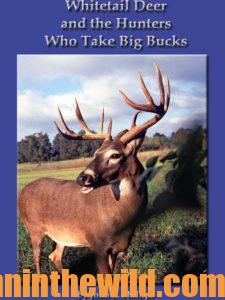
 To learn more about hunting deer, go to John E. Phillips’s book, “Whitetail Deer and the Hunters Who Take Big Bucks” at https://www.amazon.com/Whitetail-Deer-Hunters-Take-Bucks-ebook/dp/B01KU0O1KY, available in Kindle and print versions. To receive your free book on “How to Make Venison Jerky,” go to https://www.emailmeform.com/builder/form/Ece3UZVcOo52cKPJcL
To learn more about hunting deer, go to John E. Phillips’s book, “Whitetail Deer and the Hunters Who Take Big Bucks” at https://www.amazon.com/Whitetail-Deer-Hunters-Take-Bucks-ebook/dp/B01KU0O1KY, available in Kindle and print versions. To receive your free book on “How to Make Venison Jerky,” go to https://www.emailmeform.com/builder/form/Ece3UZVcOo52cKPJcL

